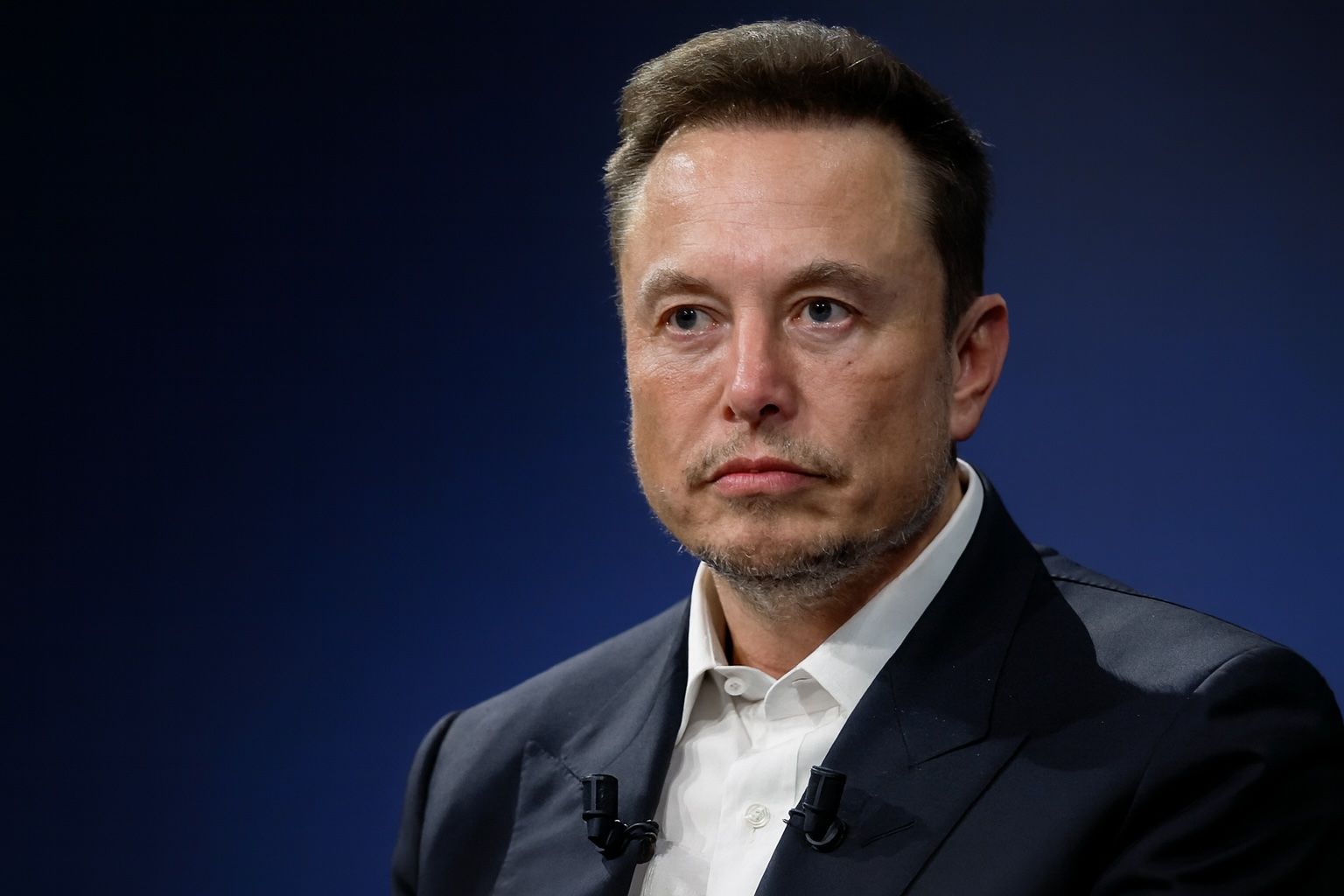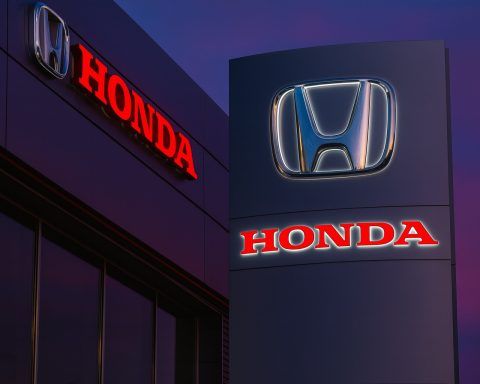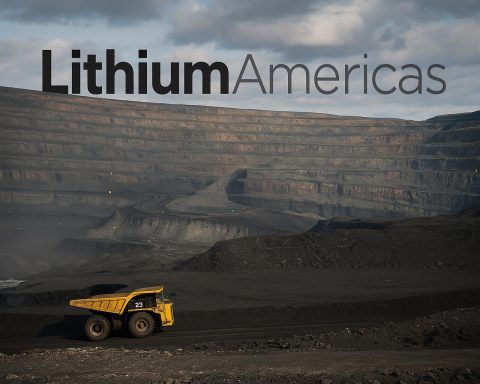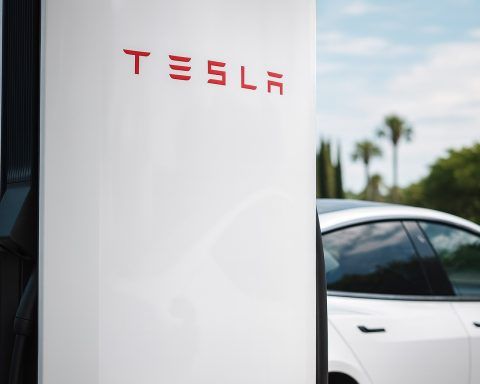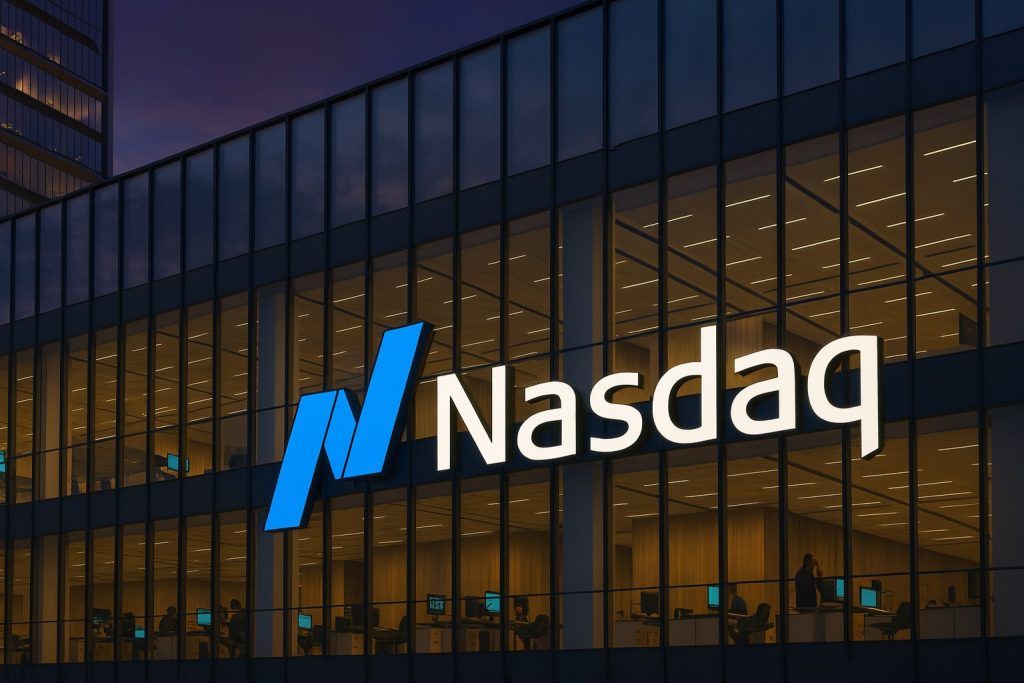- Record Pay Package Vote: Tesla shareholders are set to vote on an unprecedented $1 trillion compensation plan for CEO Elon Musk on November 6 – a package that could be the largest CEO pay deal in history [1]. The performance-based plan would grant Musk massive stock awards if Tesla hits ambitious targets – including a valuation of about $8.5 trillion by 2035 (roughly 6× today’s value) [2].
- Musk’s Rationale – Control Over a “Robot Army”: Musk insists the mega-pay plan is “not about money” but about ensuring he has enough voting control to guide Tesla’s future technologies. On the recent earnings call, he argued he wouldn’t feel “comfortable” building Tesla’s planned “enormous robot army” (the Optimus humanoid robots) without maintaining a “strong influence” over the company’s direction [3]. Musk even quipped that he has no intention of spending the theoretical payday – he just wants to secure Tesla’s mission against being ousted by others [4].
- Board Warns ‘Keep Musk or Lose Him’: Tesla’s board is urging investors to approve the pay package, warning Musk might step away if it’s rejected. In a letter to shareholders, Chair Robyn Denholm wrote that failing to pass the plan could lead to Musk “stepping away” and Tesla losing “significant value” [5]. She framed the vote as a referendum on Musk’s leadership: “Do you want to retain Elon as Tesla’s CEO and motivate him to drive Tesla to become the leading provider of autonomous solutions and the most valuable company in the world?” [6]. The board even approved an interim grant of about $29 billion in stock to incentivize Musk to stay through 2030 [7], underscoring their concern that his focus could shift to other ventures (like SpaceX or xAI) if not adequately tied to Tesla.
- Backlash from Advisers and Investors: The $1 trillion pay proposal has sparked controversy. Influential proxy advisors ISS and Glass Lewis call the package “excessive” and have urged shareholders to vote against it [8] [9]. Musk reacted with fury – on the Q3 earnings call he blasted these firms as “corporate terrorists” who “have no freaking clue,” accusing them of potentially undermining Tesla’s future [10]. Some Tesla investors are also aghast: longtime Tesla bull Ross Gerber slammed the $1 trillion deal as “the most absurd [compensation package] in the history of business,” calling it “insanity” and warning it hadn’t been properly negotiated by the board [11] [12].
- Historic Stakes and Conditions: If approved, Musk’s stake in Tesla could more than double over the next decade – from about 13% of shares to nearly 29% – giving him far greater control over the company [13]. In return, Tesla must achieve almost fantastical milestones for Musk to collect: reaching 20 million vehicles delivered annually, deploying 1 million robotaxis, rolling out 1 million Optimus robots, and an $8.5 trillion market cap – all by around 2035 [14]. The payout would dwarf Musk’s previous (already record-breaking) $56 billion stock award from 2018 by almost 18-fold [15]. It’s essentially a bet on Tesla leading the future of EVs, self-driving cars and robotics at a scale never seen before.
- Tesla Stock Near Highs – But Can Ambitions Justify It? Despite the debate, Tesla’s stock (NASDAQ: TSLA) remains buoyant. Shares trade around $430–$440, near all-time highs as of late October [16], after an ~80% surge over the past year [17]. Bulls argue the rally is fueled by Tesla’s tech prowess – from AI “robotaxi” plans to its humanoid robots – and Musk’s recent $1 billion personal stock buy was seen as a sign of confidence [18] [19]. However, skeptics note Tesla’s thin recent profit margins and lofty valuation: the stock already prices in a lot of future growth, and the average analyst price target sits around 15–20% below the current price [20]. The Q3 earnings exposed this tension – record sales and revenue, but a 37% drop in net profit year-on-year, which initially sent the stock down before a quick rebound [21]. The outlook now hinges on whether Tesla can deliver on Musk’s grand vision. Supporters like Wedbush’s Dan Ives see an “autonomous and AI-driven” “trillion-dollar opportunity” ahead [22], while others warn that hitting Musk’s moonshot targets (like 20 million cars a year, far above any automaker today) may prove unrealistic – making the $1 trillion pay package a high-risk gamble on Tesla’s far future.
Shareholders Face Vote on a Trillion-Dollar Pay Package
Tesla’s upcoming annual shareholder meeting has turned into a high-stakes referendum on the largest CEO pay proposal in corporate history. On November 6, stockholders will vote on a 10-year compensation package for Elon Musk valued at up to $1 trillion – a figure that eclipses any pay deal ever awarded to an executive [23]. If approved, the plan would potentially make Musk the world’s first trillion-dollar CEO and solidify his status as the richest person on the planet. It would also tie his personal fortune even more tightly to Tesla’s performance in the coming decade.
The pay plan is entirely performance-based. Musk would receive no giant upfront cash or bonus. Instead, the package consists of stock options or grants that vest only if Tesla achieves a series of extraordinarily ambitious milestones over the next ten years [24]. According to disclosures, those milestones include: expanding Tesla’s annual vehicle production to 20 million (several times what any automaker has ever produced in a year), deploying 1,000,000 self-driving “robotaxi” vehicles into commercial service, delivering 1,000,000 units of Tesla’s new Optimus humanoid robot, and vaulting Tesla’s market capitalization to roughly $8.5 trillion [25]. For context, a market cap of $8.5 trillion would make Tesla by far the most valuable company in history – more than triple Apple’s valuation as of 2025. These are “Mars-shot” goals by design: if Musk falls short on most of them, he gets nothing close to the full payout. But if he miraculously hits all targets, the combined stock awards could sum to around one trillion dollars in value for Musk (at the time of vesting) [26].
This proposal dwarfs Musk’s prior pay deal. Back in 2018, Tesla granted Musk a then-unprecedented ~$56 billion stock-option package tied to aggressive growth targets – at the time, the largest pay deal ever for a public company CEO. That 2018 award was hugely controversial (sparking lawsuits and criticism) yet ultimately paid out as Tesla’s valuation skyrocketed. The new $1 trillion package is about 18 times larger [27], reflecting Tesla’s far bigger size today and even bolder expectations for the future. It would solidify Musk’s ownership stake: if fully earned, Musk’s share of Tesla could rise from roughly 13% today to nearly 29% by the end of the plan [28]. In other words, Tesla is effectively offering Musk up to ~16% of the company’s stock on top of his current holdings, in exchange for delivering almost unimaginable growth. Such an outcome could make Musk personally worth well over a trillion dollars (much of it in Tesla stock) by the mid-2030s [29] [30].
The vote comes at a critical moment for Tesla. The company’s stock has been on a tear in 2023–2025 – rising about 80% over the past 12 months [31] and hovering near its all-time high around $440 per share [32] – thanks to booming sales and investor enthusiasm for Tesla’s leadership in electric vehicles and artificial intelligence. Tesla just reported record revenues of $28 billion for Q3 2025, with nearly half a million cars delivered in the quarter (an all-time high) [33] [34]. But profits have been squeezed by price cuts and higher costs, and Tesla’s net income fell 37% from a year ago [35]. That mixed picture (surging growth vs. shrinking margins) has the market split on Tesla’s true value. It’s against this backdrop that Musk is making his “trillion-dollar pitch” to investors: essentially asking them to bet that Tesla’s growth has only begun and could multiply several-fold in the next decade – if Musk remains at the helm with the right incentives.
Musk: “I Need Influence to Build a Robot Army”
Elon Musk’s case for the gargantuan pay plan boils down to one word: control. Far from portraying himself as money-hungry, Musk claims he doesn’t actually want the cash windfall at all – but he does want to maintain a strong enough ownership stake in Tesla to steer its long-term destiny, especially as the company ventures into advanced AI and robotics. On Tesla’s recent earnings call, Musk made an unusual, impassioned plea to shareholders, effectively saying he needs this stock award to feel secure investing his energy in Tesla’s next big leap [36].
Musk startled analysts on the call by invoking a sci-fi-esque scenario: Tesla is developing an “enormous robot army” – a reference to the company’s Optimus humanoid robot project – and Musk argued he wouldn’t “feel comfortable” building that army “if I don’t have at least a strong influence” over the company controlling it [37]. “My fundamental concern,” Musk said, “is if I go ahead and build this enormous robot army, can I just be ousted at some point in the future? … I don’t feel comfortable building that robot army if I don’t have at least a strong influence [over it].” [38] In other words, Musk fears a future where Tesla’s board or other investors might push him out of the company he built – perhaps over disagreements or outside pressures – once Tesla’s AI-powered products (like autonomous cars or robots) become ubiquitous. The $1 trillion stock grant is essentially Musk’s insurance policy that he’ll still be in charge when that day comes.
He was frank that this is “not about [him] going to go spend the money.” Instead, Musk likened the situation to corporate governance structures: Tesla has only a single class of common stock, so unlike founders of some tech companies, Musk lacks special voting shares that could guarantee his control. (For example, Mark Zuckerberg controls Meta via super-voting shares; Musk noted that since he didn’t found Tesla single-handedly, he “can’t be like Zuckerberg” in that regard [39].) Thus, increasing his equity stake is the only way to bolster his voting power. Musk has reportedly told insiders that he’s aiming for about 25% voting power in Tesla – otherwise he might devote his efforts to AI and robotics projects outside Tesla [40]. Gaining that level of influence likely requires either this new stock award or massive personal share purchases. (Notably, in September Musk bought $1 billion of Tesla stock with his own cash – his first such buy in years – which analysts saw as a signal of commitment to Tesla’s future in AI [41].)
Musk’s focus on a “robot army” underscores Tesla’s evolution from just an electric car maker into a leader in robotics and artificial intelligence. The Optimus humanoid robot (prototypes of which Musk has shown doing basic tasks) is still in early development, but Musk believes such robots – along with autonomous Tesla vehicles – could revolutionize the economy. However, rolling out fleets of self-driving taxis or factory-working androids would raise new ethical and strategic questions. Musk apparently wants to ensure he is the one making the big calls when Tesla’s AI revolution hits full stride. “If we build this robot army, do I at least have a strong influence over [it]?” he pressed, suggesting he’s not willing to pour his time and talent into birthing Tesla’s next-generation products unless he knows he can guide them safely and won’t be, as he put it, “ousted because of some asinine recommendations” from outside advisors [42] [43].
The colorful “robot army” argument might sound eyebrow-raising, but it’s Musk’s way of selling the pay plan as aligned with shareholder interests: he’s effectively saying, I only want this huge payout if I succeed in making you (the investors) vastly richer too by transforming Tesla into a company of the future. And to do that, he asserts, I need enough skin in the game to stay in charge. By highlighting that he wouldn’t personally cash out the $1 trillion (it would come mostly in the form of stock that he presumably would hold), Musk is trying to frame the debate around vision and control rather than personal greed.
Board Pleads: Retain Musk or Risk Tesla’s Future
Tesla’s board of directors has thrown its weight fully behind the massive compensation proposal – and is openly raising the alarm about what happens if Musk doesn’t get it. In a letter to shareholders dated October 27, Tesla Chair Robyn Denholm delivered a stark message: failing to grant Musk this pay package could result in him walking away as CEO, which the board believes would severely harm the company [44].
“The fundamental question for shareholders at this year’s Annual Meeting is simple: Do you want to retain Elon as Tesla’s CEO and motivate him to drive Tesla to become the leading provider of autonomous solutions and the most valuable company in the world?” Denholm wrote in the letter [45]. She noted Musk’s unrivaled role in unlocking Tesla’s “full potential,” and warned that if the compensation plan is voted down, Musk might “step away”, causing Tesla to lose “significant value” [46]. In essence, the board is presenting the pay deal as a must-pass measure to secure Musk’s continued leadership through what it calls an era of unprecedented growth and innovation.
Behind that strong stance is a very real concern: Elon Musk is juggling many ventures and has, at times, appeared stretched thin. In addition to Tesla, he runs SpaceX (the rocket and satellite company), xAI (a nascent artificial intelligence startup he founded in 2023), and is the owner of X (Twitter). There have been worries among investors that Musk’s attention is divided and that he could lose interest in Tesla or devote more time to his other passions if Tesla doesn’t keep him sufficiently engaged. Musk himself has hinted that unless he secures a larger ownership (around 25% of voting power), he might rather focus on his AI ambitions outside of Tesla [47].
The board’s $1 trillion incentive plan is explicitly designed to “lock in Musk’s commitment” to Tesla for the next decade [48]. In fact, Tesla’s directors have already taken interim steps this year to entice Musk to stay: according to reports, the board quietly approved a separate restricted stock grant worth about $29 billion for Musk, meant to keep him as CEO through at least 2030 [49]. That hefty award, which would be a headline-grabber on its own in any other context, has been overshadowed by the even larger $1 trillion proposal. It shows how far Tesla’s board is willing to go to ensure Musk doesn’t drift away.
Tesla’s directors argue that Musk’s vision and leadership are irreplaceable. Under his tenure, Tesla went from a niche EV startup to the world’s most valuable automaker and a pioneering force in self-driving tech, batteries, and now robotics. In the board’s view, keeping Musk at Tesla’s helm could be worth far more than $1 trillion in new value – whereas losing him could be devastating. This sentiment was echoed by Tesla’s Chair in her letter, and the company’s official proxy materials for the annual meeting emphasize that Musk’s continued leadership is “critical” for Tesla to achieve its long-term goals in autonomous vehicles and AI.
It’s an extraordinary position – essentially Tesla is negotiating against the possibility of its own CEO’s departure, using an unprecedented sum of stock as the bargaining chip. Some governance experts have pointed out that this dynamic raises questions about oversight: normally a board would not suggest that a chief executive might leave unless paid an astronomical sum. But Tesla has never been a normal company, and Elon Musk not a typical CEO. The board appears convinced that without a big new carrot, Musk’s attention (and talent) might be pulled toward SpaceX’s Mars rockets or xAI’s quest to rival ChatGPT – to Tesla’s detriment. Thus, they are urging shareholders to “bet on Musk” by approving the lavish pay deal, effectively wagering that whatever the cost in dilution, Musk’s leadership will create even greater value for everyone in the long run.
Backlash: “Excessive” Pay Plan Spurs Debate
Despite the board’s full-court press, the $1 trillion pay package has faced significant pushback from shareholder advocates, proxy advisory firms, and even some of Musk’s once-supportive investors. Critics argue the plan is outrageously generous and potentially dangerous for corporate governance, concentrating too much power in Musk’s hands.
Two highly influential proxy advisory companies – Institutional Shareholder Services (ISS) and Glass Lewis – have both recommended that Tesla shareholders vote against the compensation proposal [50]. ISS blasted the plan as “excessive” and far beyond typical pay-for-performance norms [51]. Glass Lewis raised similar concerns, noting that granting Musk such a gigantic chunk of stock could dilute other investors and that the performance hurdles, while high, might still incentivize reckless risk-taking. Both firms essentially concluded that no matter how exceptional Musk is, a potential $1 trillion reward is “astronomical” to the point of being inappropriate [52]. Their formal reports urged Tesla investors to reject some or all elements of the plan.
Elon Musk did not take kindly to these objections. In the Q3 earnings call, Musk went on a tirade aimed squarely at ISS and Glass Lewis. He accused the proxy advisors of acting against shareholders’ interests and slammed them as “corporate terrorists” who “have no freaking clue” about Tesla [53]. Musk suggested these firms wield outsized influence and could even sway enough votes to “remove him” as CEO – a prospect he clearly finds intolerable [54]. “I just don’t feel comfortable… being ousted because of some asinine recommendations from ISS and Glass Lewis,” Musk fumed during the call [55]. His unusually personal attack laid bare the tension: Musk sees the pay plan fight as part of a bigger battle for control over Tesla’s future, with himself on one side and what he views as short-sighted “suits” on the other. (It’s worth noting that proxy firms only advise; the actual decision rests with Tesla’s diverse base of shareholders, including big institutions and many retail investors loyal to Musk.)
Beyond the advisory firms, some notable Tesla investors have publicly criticized the $1 trillion package. Ross Gerber, CEO of Gerber Kawasaki and a long-time Tesla shareholder often bullish on Musk, didn’t mince words. “Obviously the pay package thing is insanity,” Gerber posted on X (Twitter), calling it “the most absurd [compensation plan] in the history of business.” [56] [57] He questioned whether Tesla’s board truly negotiated in shareholders’ interest, implying Musk may have too much sway over directors. Other investors have echoed the sentiment that while Musk’s vision is respected, this pay deal “goes too far” and sets a troubling precedent. Some have expressed concern that if Musk gains nearly 30% ownership, Tesla would be de facto controlled by one man, reducing board oversight and minority shareholder rights.
Corporate governance experts also point out that a package of this magnitude raises conflicts of interest. Musk is already Tesla’s largest shareholder; giving him even more equity could make it nearly impossible for shareholders to ever vote him out or challenge him on strategic issues, even if such action were necessary. Critics cite Musk’s sometimes erratic behavior (for example, his ventures into politics or controversial statements) and argue that tying Tesla’s fate so closely to one individual is risky. “This deal consolidates Musk’s influence over Tesla’s board,” one watchdog group warned [58], noting that Musk’s personal control over the company would increase significantly if the plan goes through.
Meanwhile, labor unions and activist investors have launched a campaign dubbed “Take Back Tesla” to rally opposition to Musk’s pay plan [59]. They argue that Tesla’s success is due to thousands of employees and shareholders, not just Musk, and that rewarding any executive with such an exorbitant sum is unjustified and could divert resources from other uses (like reinvesting in the company or paying workers). Some also worry that Musk’s focus on his own stake might distract from more immediate challenges Tesla faces – such as rising EV competition and regulatory scrutiny over safety and labor matters.
Despite the noise, it’s not clear that the backlash will stop the plan. Tesla’s investor base includes many retail shareholders who idolize Musk and credit him for the company’s remarkable rise. These fans often vote in line with Musk’s wishes. In early online polls on say.com (a platform for Tesla investor questions), there were indications of strong retail support for keeping Musk “highly incentivized.” Additionally, some big institutional investors may be inclined to side with Tesla’s board as long as they believe the performance targets truly align with shareholder value creation. The board’s aggressive campaigning – including Chair Denholm’s letter and other executive statements – suggests Tesla is confident it can sway a majority to yes. Indeed, some observers think the proposal will pass despite controversy [60], given Musk’s track record and influence.
Tesla Stock Soars as Investors Weigh Future Prospects
One reason many shareholders are even considering backing such a colossal pay package is that Tesla’s stock performance has been exceptional, and Musk’s leadership is widely seen as a key driver of that success. Tesla’s share price has climbed dramatically over the past year, reaching around $433 as of October 27 – roughly 80% higher than a year ago [61], and near its 52-week (and all-time) high of about $453 [62]. By comparison, the S&P 500 index gained only ~17% in the same period [63]. In 2023, Tesla was one of the market’s top-performing large-cap stocks, recovering from a dip in 2022 and then some. This surge has already made Musk’s existing shareholdings enormously valuable (helping vault his net worth to around $500 billion) and has boosted Tesla’s market cap to approximately $1.3–1.4 trillion in late 2025 [64].
However, the stock’s climb has not been a straight line. Tesla’s valuation is steep, and the company’s quarterly results have introduced volatility. After peaking in early October on news of record Q3 deliveries, Tesla shares seesawed as investors digested the Q3 earnings report: while revenue hit a record $28.1 billion, higher costs and price cuts caused profit margins to shrink, and earnings per share missed Wall Street’s estimate [65] [66]. The stock initially dropped ~4% on the earnings miss [67], only to rebound the next day when dip-buyers stepped in, and then fell again a couple days later on renewed concerns [68]. By late October, Tesla was roughly flat versus the start of the month – highlighting the tug-of-war between bulls and bears. Bulls remain focused on Tesla’s breakneck growth (vehicle deliveries up 7% year-over-year to new highs) and its long-term potential in software, AI and energy. Bears point to the erosion of Tesla’s once-fat profit margins (automotive gross margin slipped into the teens from ~25%+ historically) and the fact that Tesla is trading at a very high multiple of current earnings [69].
Looking ahead, much of Tesla’s lofty valuation rests on future growth assumptions – the very growth Musk’s pay plan is meant to incentivize. To justify a multi-trillion dollar market cap, Tesla will need to dramatically expand its business beyond premium electric cars. That means scaling to tens of millions of EVs per year (entering mass-market segments), launching autonomous robotaxi services that could potentially dominate ride-hailing, and creating new revenue streams from humanoid robots or other AI applications. Musk frequently touts Tesla as not just an auto company but as a leader in “robotics and artificial intelligence on wheels”, hinting at services and products that could generate software-like margins.
Wall Street’s forecasts for Tesla diverge widely. Optimistic analysts like Dan Ives of Wedbush argue that Tesla’s investments in self-driving tech, its Dojo AI supercomputer, and projects like Optimus could open up “a $1 trillion golden opportunity” over the next decade [70]. In this bullish scenario, Tesla’s revenue and profit could multiply several-fold, potentially making that $8.5 trillion market cap goal not as crazy as it sounds. Some bulls have price targets on Tesla stock well above $600 (one prominent investor even predicted $900 within a year) [71], implying huge upside. On the other hand, more conservative analysts see Tesla’s stock as overextended. The average 12-month analyst price target is only around $365 – roughly 15–20% below the current share price [72] – reflecting concerns about intensifying EV competition, higher interest rates damping car demand, and the execution risks in scaling new ventures. Roughly half of analysts have a Hold or Sell rating on TSLA [73], and some bearish targets go as low as ~$127 [74], suggesting Tesla could fall sharply if growth disappoints.
In the near term, Tesla’s stock could be sensitive to the outcome of the Nov. 6 shareholder vote. Investors generally don’t like uncertainty or drama at the top of a company. A rejection of Musk’s pay plan might initially spook the market – raising questions about Musk’s future involvement or signaling an unusual rebuke to management. Conversely, approval could remove a cloud and be seen as ensuring Musk is “all-in” on Tesla’s next chapter, which bullish investors might cheer. Still, there’s a flip side: if the package passes, it does introduce the prospect of significant shareholder dilution over time (as new stock awards vest to Musk) and cements Musk’s control, which not everyone will welcome. Some large investors could bristle at the governance implications even if they believe in Musk’s ability to deliver growth.
Tesla’s own board and Musk would likely take a yes vote as a strong vote of confidence in Tesla’s long-term strategy. With Musk deeply invested (literally and figuratively) in hitting those moonshot targets, the company could double down on its bold initiatives – ramping up factory expansions, pouring money into AI development, and accelerating projects like the Tesla Robotaxi network and Optimus robots. That could mean higher spending and thinner margins in the medium term, which is something investors will have to stomach in exchange for potential massive payoffs down the road. Musk has already cautioned that Tesla is entering a heavy investment cycle (he recently said to expect “a few rough quarters” as the company spends on AI and factory tooling) [75] [76]. The trillion-dollar pay plan essentially aligns with this philosophy: short-term pain for Musk (no easy money unless targets are met) and for Tesla (big investments), in pursuit of an outsized long-term gain.
Outlook: High Stakes for Musk and Tesla’s Future
As the shareholder vote approaches, Tesla finds itself at an inflection point. Elon Musk’s audacious pay proposal has become a litmus test for how much investors trust his vision. If approved, it will signal that shareholders are willing to make Musk astronomically rich only if he makes them all much richer too, by achieving goals that would transform Tesla into one of the most valuable and consequential companies in history. It’s a high-risk, high-reward bargain – essentially betting that Musk can replicate the explosive growth of the past decade on an even grander scale over the next.
For Musk personally, the stakes are equally high. A yes vote would not just put him on track for a theoretical $1 trillion payday; it would also affirm his commanding position within Tesla. With potentially nearly 30% ownership by 2035, Musk would have ironclad control to pursue his agenda – whether that’s building robo-taxis, factories full of humanoid workers, or something yet unseen. It would make it very hard for any future board or shareholder movement to challenge him. Musk’s recent comments make clear this is exactly what he wants: the freedom to lead Tesla as he sees fit into the age of AI, without fearing a coup or ouster. One could argue that Tesla’s innovative drive is indeed fueled by Musk’s unorthodox, big-swing leadership – and the pay plan is meant to ensure that continues.
On the other hand, a no vote would be a rare rebuke for Musk. It might force him and the board back to the drawing board to come up with a less grandiose incentive plan, or at least to engage more with investor concerns. More ominously, Musk could react negatively – there is speculation (fueled by Musk’s own hints) that he might lose some interest or split his time more if he doesn’t get the additional stake he wants in Tesla [77]. While it’s unlikely Musk would ever completely abandon Tesla, even the idea of him being less involved is enough to give some shareholders nightmares. The board’s warnings underscore that fear: they clearly believe Musk might reduce his focus on Tesla if not duly motivated.
In the coming days, both sides will make their final pitches. Expect Musk and Tesla’s executives to highlight every bit of positive news – technological breakthroughs, expansion plans, AI achievements – to stoke investor optimism. Detractors will underscore the sheer scale of the reward and urge shareholders to assert that no one, not even Musk, is worth that much. We may also see Tesla’s stock gyrate as traders handicap the vote’s outcome.
No matter which way the vote goes, Tesla will continue to face the challenges of delivering on very lofty promises. The concept of a $1 trillion pay package tied to a “robot army” underscores just how far-reaching Musk’s goals are. Tesla is not just about selling cars; it’s about potentially reshaping transportation, labor with robotics, and even the energy grid. Musk’s moonshot pay deal is thus a symptom of Tesla’s broader narrative – a company perpetually shooting for the moon (and Mars) under a leader who thinks no target is too high.
For now, the world – from Wall Street to Silicon Valley – will be watching this shareholder showdown. Will investors hand Elon Musk the keys to a trillion-dollar treasure chest to drive Tesla’s next chapter? The outcome will reverberate well beyond Tesla. It could set a new bar (or limit) for executive pay in an era where visionary founders increasingly straddle multiple industries and command cult-like followings. As CNBC’s Jim Cramer put it in support of Musk’s case, “Hate him or like him… this guy’s real smart… Unlike so many other CEOs, he’s actually worth it.” Cramer argued that Musk “needs to be in control so the robots don’t take over” and urged Tesla’s board and investors to “give the man the pay package he wants.” [78]
Soon, it will be up to Tesla’s shareholders to decide if Musk has earned that vote of confidence. One thing is certain: few corporate storylines have ever combined high-tech dreams, enormous wealth, and personality drama quite like this one. Tesla’s annual meeting could very well become a landmark moment in business history – the day investors either blessed the boldest CEO pay deal ever, or sent even Elon Musk back to the drawing board.
Sources:
- CNBC News – Inside Wealth (Robert Frank) [79] [80]
- Yahoo Finance / Tesla Q3 Earnings Call (Pras Subramanian) [81]
- Business Insider – Letter from Tesla Chair [82] [83]
- TS² (TechStock²) – Tesla’s Wild October (Marcin Frąckiewicz) [84] [85]
- TS² – Tesla’s Record Sales Soar as Profit Squeezes [86] [87]
- TS² – Elon Musk $1B Stock Buy (Context on pay plan) [88] [89]
- The Independent – Earnings Call report (Harry Cockburn) [90] [91]
- Teslarati – Jim Cramer on Musk’s pay package (Joey Klender) [92] [93]
- Reuters – Tesla earnings and investor reactions [94] [95]
- Reuters – Proxy adviser recommendations [96] and shareholder vote details [97].
References
1. ts2.tech, 2. ts2.tech, 3. www.reddit.com, 4. www.reddit.com, 5. www.businessinsider.com, 6. www.businessinsider.com, 7. ts2.tech, 8. ts2.tech, 9. www.the-independent.com, 10. www.the-independent.com, 11. x.com, 12. www.yahoo.com, 13. www.the-independent.com, 14. www.the-independent.com, 15. ts2.tech, 16. ts2.tech, 17. ts2.tech, 18. ts2.tech, 19. ts2.tech, 20. ts2.tech, 21. ts2.tech, 22. ts2.tech, 23. ts2.tech, 24. www.the-independent.com, 25. www.the-independent.com, 26. www.the-independent.com, 27. ts2.tech, 28. www.the-independent.com, 29. link.cnbc.com, 30. ts2.tech, 31. ts2.tech, 32. ts2.tech, 33. ts2.tech, 34. ts2.tech, 35. ts2.tech, 36. www.reddit.com, 37. www.reddit.com, 38. www.reddit.com, 39. www.teslarati.com, 40. ts2.tech, 41. ts2.tech, 42. www.the-independent.com, 43. www.the-independent.com, 44. www.businessinsider.com, 45. www.businessinsider.com, 46. www.businessinsider.com, 47. ts2.tech, 48. ts2.tech, 49. ts2.tech, 50. www.the-independent.com, 51. ts2.tech, 52. ts2.tech, 53. www.the-independent.com, 54. www.the-independent.com, 55. www.the-independent.com, 56. x.com, 57. www.yahoo.com, 58. ts2.tech, 59. www.teslarati.com, 60. www.the-independent.com, 61. ts2.tech, 62. ts2.tech, 63. ts2.tech, 64. ts2.tech, 65. ts2.tech, 66. ts2.tech, 67. ts2.tech, 68. ts2.tech, 69. ts2.tech, 70. ts2.tech, 71. ts2.tech, 72. ts2.tech, 73. ts2.tech, 74. ts2.tech, 75. ts2.tech, 76. ts2.tech, 77. ts2.tech, 78. www.teslarati.com, 79. link.cnbc.com, 80. link.cnbc.com, 81. www.reddit.com, 82. www.businessinsider.com, 83. www.businessinsider.com, 84. ts2.tech, 85. ts2.tech, 86. ts2.tech, 87. ts2.tech, 88. ts2.tech, 89. ts2.tech, 90. www.the-independent.com, 91. www.the-independent.com, 92. www.teslarati.com, 93. www.teslarati.com, 94. ts2.tech, 95. ts2.tech, 96. ts2.tech, 97. ts2.tech
